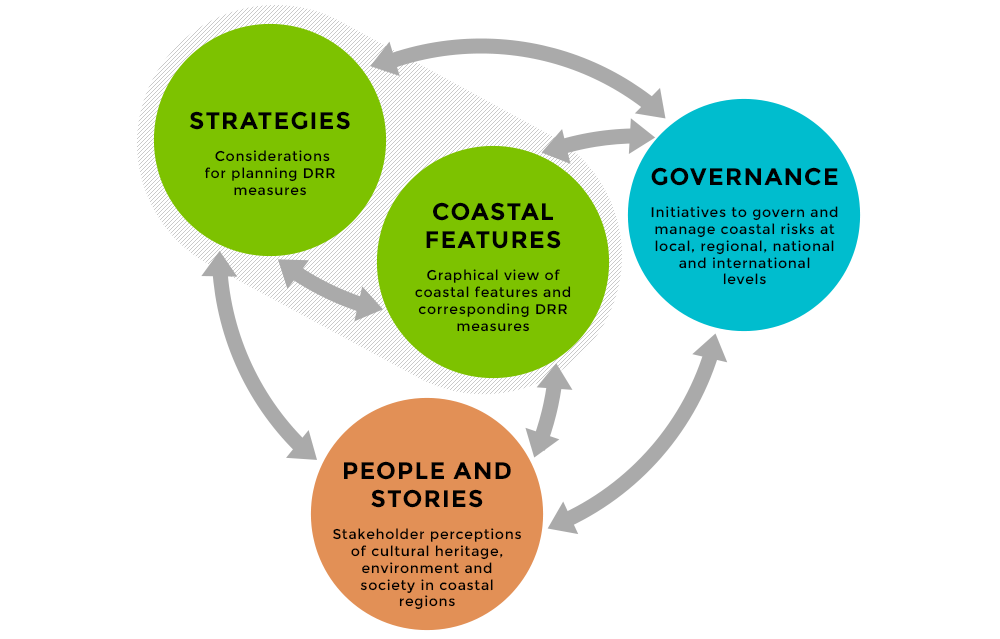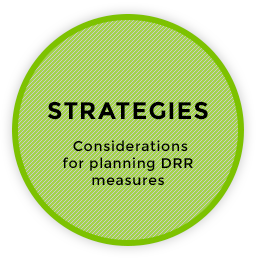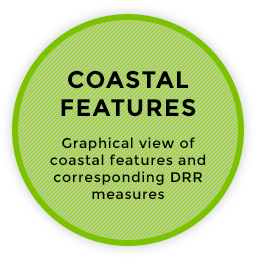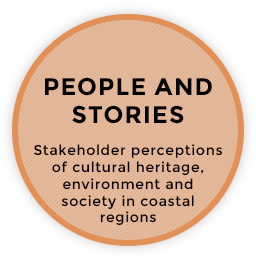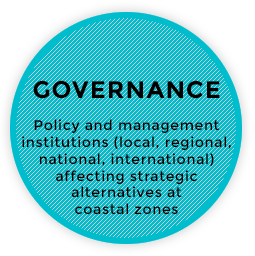European coastal states are affected by coastal hazards resulting from floods, storm surges and erosion which impact thousands of kilometers of European coasts. Between 1998 and 2009, Europe suffered over 213 major damaging floods which have caused some 1126 deaths, the displacement of about half a million people and at least €52 billion in insured economic losses.1
Disaster risk reduction (DRR) is defined2 as the concept and practice of reducing disaster risks through systematic efforts to analyse and reduce the causal factors of disasters. Reducing exposure to hazards, lessening vulnerability of people and property, wise management of land and the environment, and improving preparedness and early warning for adverse events are all examples of disaster risk reduction.
Risk management planning is the result of the interaction of a measure with the biophysics of the coasts (“COASTAL FEATURES”), the human behaviour (“PEOPLE & STORIES”) and the institutional arrangements (“GOVERNANCE”). Each coast is characterized by bio-physical and cultural particularities, like coastal morphology, heritage, cultural values, legal and administrative traditions, interpretations of risk and economic situation. Therefore, the utilization of a given measures can only be successful if the particular biophysical, cultural and institutional background that the measure steams from are well understood.

